This example describes how to manage the Alarm Redirection settings for a static database item that is moved from one location (region) to another location (region).
This example depends on the following assumptions:
- You have configured all the database items to represents all the system items (points, outstation, channels and so on).
- You have created the required Regions within which your items are placed.
- You have configured all the Users and User Groups responsible for the operation of the system.
- You have configured the Location settings for all items including Users.
- You have configured either E-Mail or Pager Actions and the relevant Alarm Redirection settings for your database items.
The following example shows a system that consists of three regions with the following items.
- Upper Region—Contains points AO01, AO02 and AO03
- Base Station—Contains the Outstation
- Lower Region—Contains points AO04, AO05 and AO06.
- Operator User Group A—Contains four Operator users 01 through to 04.
- Operator User Group B—Contains four Operator user 05 through to 08.
Initial System Configuration
The Initial System Configuration below, illustrates the position of all the items and the Alarm Redirection settings. In this example E-mail Actions are used to notify users of an alarm in their regions.
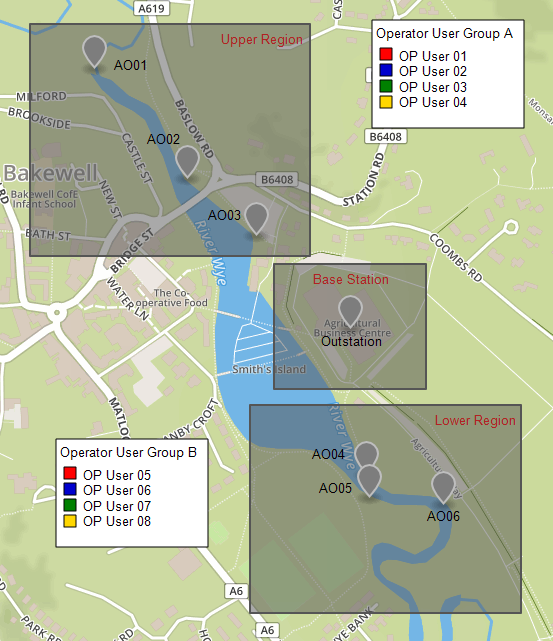
- The alarms associated with points AO01, AO02 and AO03 are redirected to users in the Operator User Group A.
- The alarms associated with points AO04, AO05 and AO06 are redirected to users in the Operator User Group B.
The User Group A is assigned responsibility for the Upper Region and User Group B for the Lower Region, (see Assign Regions of Responsibility).
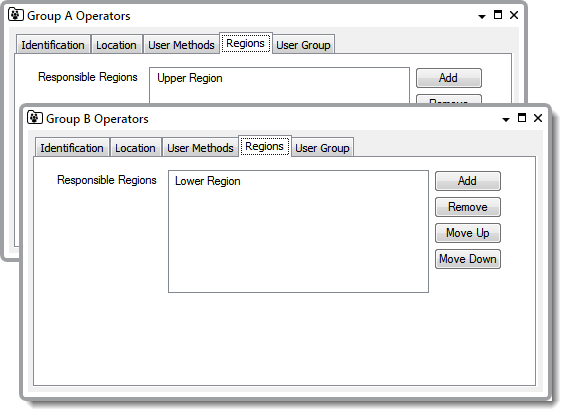
The E-Mail Action that is to be used with items in each region is defined for all users attached to each Region using the By Matching Set User Regions Redirection Scheme similar to that shown below.
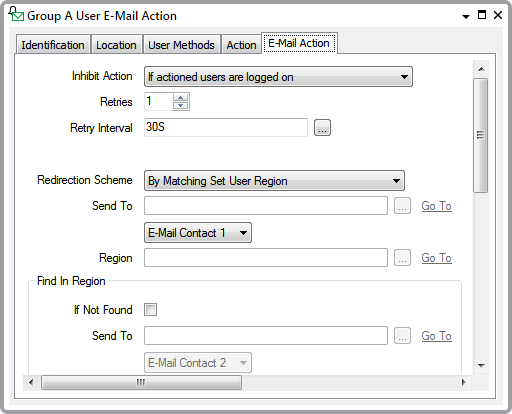
This option redirects alarms to users that are deemed to be 'responsible' for the region that is associated with the alarm. With this option, ClearSCADA checks which users are associated with the same region as the database item for which the alarm has been raised.
Users can be associated with multiple regions, including those specified on the User Form, and User Group Form; if any of these match the region associated with the database item for which the alarm has been raised, those users are deemed to be 'responsible' for the alarm's region. Providing that the users and alarm match other redirection criteria (including the Inhibit Action on the Action Form), ClearSCADA redirects the alarm to those users, (see Define the E-Mail Action Details).
Finally, within the properties of the Group that contains the assets the Redirection tab is configured to redirect using the User E-Mail Action, similar to that shown below.
Configuring the Alarm Redirection of the Group means that all the items within that group inherit those settings by default. You can override the settings of any item within the Group if required.
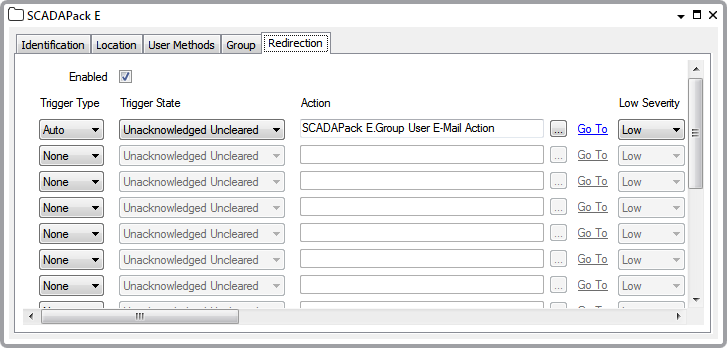
Amended System Configuration
When an item is moved (AO01 in this example) from one region to another as shown below, you only need to update the Location settings for the item.
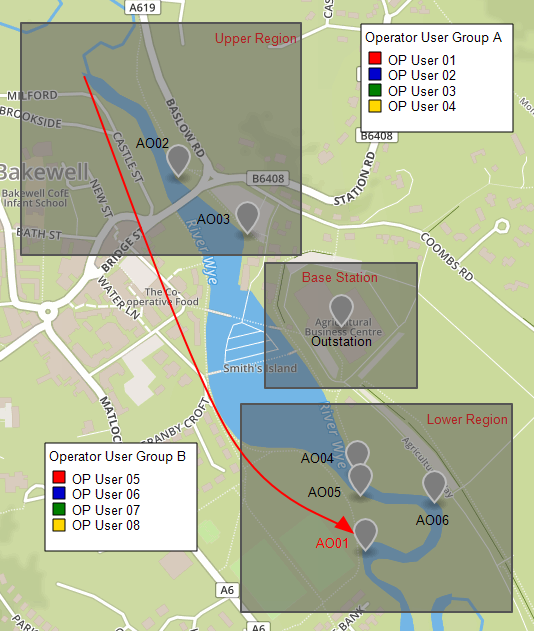
Edit the properties Form for the item and change the position values to reflect the new location of the item, (see Use the Location Tab to Specify and Items Geographical Coordinates).
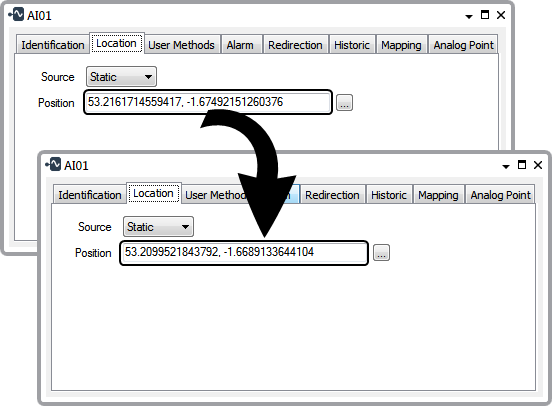
When the item Location settings are updated to reflect the new location, ClearSCADA will automatically identify that the item is in the Lower Region. Providing that all the items are in the same Group the alarms for that item are automatically redirected to the User Group responsible for the region that contains the item.
To test that the redirection of the alarms is working correctly you need to login as a User Group B user and check if any alarms are received from the item that has been moved.